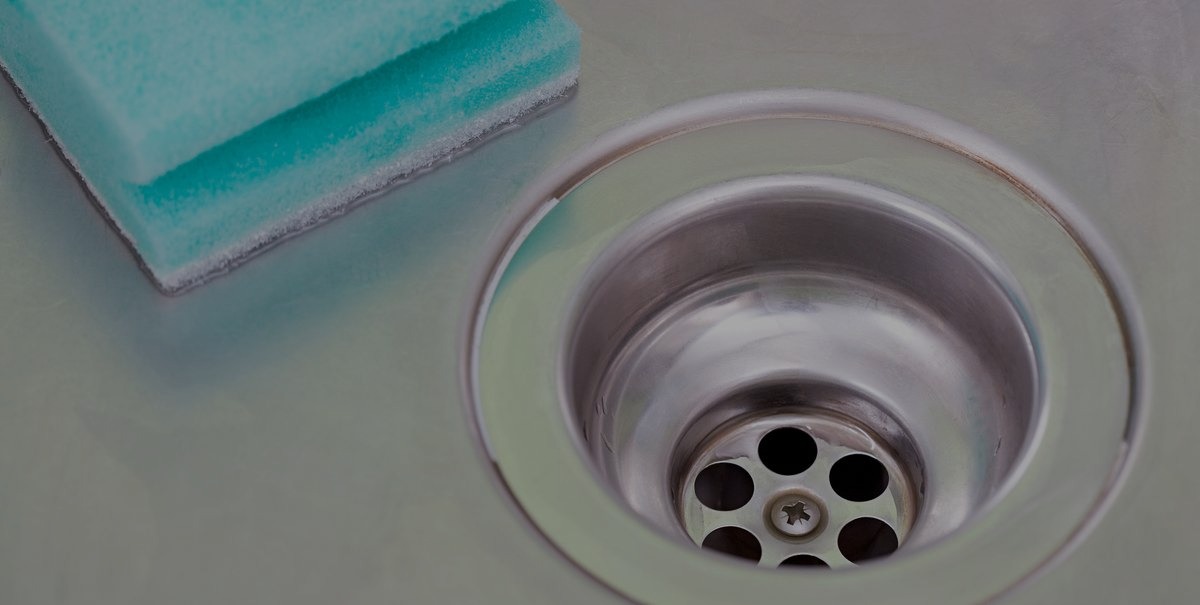You may assume that the toilet flapper lasts the lifetime of your toilet. Wrong!
Truth is, toilet flappers are not something that you set and forget. When you skip the maintenance, you may get into trouble – the displeasure of a sticky, gunky, hardened, and degraded flapper seal. Eventually, you can get in a situation of a toilet flapper leaking water.
Unfortunately, minor or slow leaks caused by a toilet flapper can go unnoticed with relative ease. Yet, water continuously running into your toilet tank may affect your water bills. Expect up to 5 gallons of wasted water per day and a bill of hundreds. More than an annoying water trickle, a faulty toilet flapper can cause overflows, pink toilet mold, or even worse, flooding to your home.
Still, if you are lucky and proactive enough, a toilet flapper leak could be easy to detect and fix. Here, the Twin Home Experts – the go-to plumbers in Los Angeles – will gladly “leak” some pro advice, so you can problem-solve and avoid this nasty running toilet in the future.
Let’s dive in!
But First: How Does The Toilet Flapper Work?
To fix toilet flapper problems, you need to know how this part works. A toilet flapper valve, simply put – acts as a plug, regulating the water flow to and out of the toilet tank after flushing. How?
The toilet part opens up once there is a demand for draining water from the tank. The flapper closes when enough water is drained down into the bowl, and the tank fills slowly back up with water. But when the watertight seal deteriorates, it’s most likely to end up with a ghost flushing.
Symptoms Of A Leaking Toilet Flapper
Even the sturdiest toilet flapper can become problematic. The tell-tale signs that you might have a malfunctioning flapper are:
- Toilet water runs intermittently or for a longer amount of time than usual;
- Rippling water move in the bowl between flushes;
- Low flushing power and hissing “filling” sounds;
- Jiggling the toilet handle doesn’t stop the toilet from flushing;
- Wet toilet tank, mold, mildew growth, and funny smells;
- Water bills higher than expected;
- Flood can be a potential scenario if you left your dwelling unattended for a long time.
No prize for guessing whether the issue is water damage-threatening. It’s always best to entrust the issue to a professional plumber who has the experience and know-how to repair the leaking toilet issue right away.
Need professional help now? Call 877-941-1640 or message us online for a free inspection. We offer a same-day plumbing service!
Why Is Your Toilet Flapper Leaking?
#1 – Outdated Flapper
As time goes by, toilet flappers become less efficient because of dirt and sludge build-up around the seal. That’s normal – these parts are “perishable” and typically leak, often because of their intensive use.
Perhaps surprisingly, your hard-working toilet flapper simply needs a little maintenance and, apart from being covered with blemishes, can last between 3 and 5 years (sometimes more, if you are lucky). There are certain cleaning products formulated to help remove deposits from submerged elements. The mixture of baking soda, hot water, and white vinegar is a cheap and effective solution, also working inside your tank.
#2 – Drop-in Toilet Cleaners
“To drop chemical tablet cleaners into the tank can cause even the chemical-resistant rubber, silicone, or plastic flappers to deteriorate sooner than you expect, and lead to a never-ending flush.”, commented Harry H. Knowles, a certified toilet plumbing professional. Home maintenance and improvement franchise company operating across the UK and Australia. “A fresh-scent toilet might be a flush away, but in-tank cleaners should be your last resort. Yet, if you tend to use bleach-chlorine tablets, expect a brittle flapper in a year or so. Another potential hazard is that these tiny bits of toilet tank cleaners can get stuck into the flush valve, preventing the cistern from refilling after flushing. Worse, you can invalidate your toilet warranty if damage like a leaky flapper happens”, the expert adds.
#3 – Hard Water
For you, hard water may not pose any health risks. But over time, water mineral deposits and higher pH levels leave behind residue that sticks to the inside of your toilet flapper elements. If your home or office is located in the US “hard-water” areas, consider your toilet flappers more vulnerable to crumble, warp, and cracks.
Also worth noting: You can preempt preventable damages if you have a water softener installed. All you need is a little plumbing work, a drain, and a power source if the model requires it.
#4 – High Water Pressure
This is a much more unlikely situation, however, it can happen. In order for your toilet flapper to drain an adequate quantity of water down the bowl, the water pressure needs to be adequate. If the pressure is too high, your plumbing appliance will tell you by the readings of your water pressure gauge. Or, it will simply break down.
Keep in mind that domestic water pressure sweet spots are usually between 30 and 60 PSI. And neither your internal toilet parts nor your kitchen appliances can withstand a pressure force of over 80 PSI.
Thumbs up to those of you who already have pressure reduction valves installed to protect the health of the plumbing system and appliances.
#5 – Bacteria Life In Water
The existence of bacteria, algae, and rotifer habitats in the toilet tank water is a common reason for a malfunctioning flapper valve. All of them prematurely deteriorate the tank fittings. The solution for a long-lasting flapper is to pick one that actively inhibits bacteria growth and is hard-water resistant. Keep in mind that the best flapper models are made of anti-corrosion and anti-fungal compounds to prevent early malfunctions.
#6 – Chain Too Loose
The guilty component could be the chain link that holds the flapper and the handle arm. If it’s too long, it can get caught under the flapper after you flush, resulting in intermittent but substantial tank leaking. Don’t worry, you can make a simple adjustment by hand to bridge the problem over. Then, flush the toilet to check if it works.
#7 – Chain Too Tight
Often, a short or stuck flapper chain can make it impossible for the flushing mechanism to work properly. The most obvious symptom is the feeling of tension when you push the handle. The fix? You can adjust the flapper-chain combo slack at about ½ inch, so it can do its essential job.
How To Check For A Toilet Flapper Leak?
You’ve let your faulty decade-old flapper pile up hundreds of $$$ water bills, and now, you realize it’s time to check if the symptom of trickling water between flushes is a real danger. Here’s what to do before you set about changing your flapper:
- Perform a food coloring test. Your first port of call is to make a dye test, which will reassure you if you need to replace the flapper. All you have to do is to lift the lid after you have the flush button off. Then, pour 10-20 drops of green/blue food coloring in the tank and let the substance sit for an hour. Blame the flapper for the toilet leak if the dye has made its way into the bowl. The faster it seeps into the bowl, the more serious the water leak is. Our verdict? Fix or replace your toilet flapper assembly.
- Check if the flapper snugly seals against the flush valve. If you find yourself questioning whether the flapper seals properly, inspect its rubber element for nicks or irregularities with the help of a finger. The situation might be that your flapper lost its flex to provide a secure seal, causing a continual supply of water to the toilet bowl. Apply a couple of thrusting (but gentle) motions to get it to fit properly in the flush valve. Though, you still need to replace it before the problem escalates.
How To Replace Your Leaking Toilet Flapper With a Trouble-Free One?
Is your toilet flapper not closing? Is it outdated and inefficient? Is your toilet mechanism out of warranty?
Your intuition is right. You can cut the safety-related risks – including mold growth, toilet overflows, and water damage – by installing a new, leak-free toilet part. Luckily, the change of a toilet tank flapper needs only a new unit ($10-$30) and is a 15 min, easy-to-do DIY project. No need for special tools or toilet removal.
Apart from luck, gear up with the Twin Home Experts tips for changing a worn-out toilet flapper and achieve your goal faster and with fewer problems:
Step #1 – Shut The Water Off And Empty The Tank
Before you get busy with the flapper disassembly, your first job is to locate the main water supply valve. Turn its handle clockwise – with a disconnected water supply, the tank will no longer refill. For an extra measure of safety, flush the toilet several times to help the tank drain completely.
Step #2 – Dismount The Faulty Component
To disassemble, it is a matter of raising the toilet lid and locating the black or red rubber/plastic flapper down at the bottom of the tank. Next, disconnect the flapper from the left and right tab of the overflow tube and unhook the chain from the toilet handle arm. With the defective flapper off, next, pull it out.
A useful tip is to take a couple of pictures from different angles of your tank mechanism, so you know how to restore the configuration at a later stage of the process.
Step #3 – Clean The Seal Beneath Your Flapper Location
As mentioned earlier, at this step, you might realize that the flapper is not faulty but covered with grime or dirt. Before you run to the nearest DIY store, give the flapper and everything around its seat a good clean-up with a mild, natural cleaning solution. Then, make sure the seal is smooth to the touch. Otherwise, the connection with the flapper won’t be watertight. Finally, it’s worth testing the toilet for leaks one more time.
Step #4 – Figure Out Which Is The Right Toilet Flapper Fit
The rule: “One size doesn’t fill all” is valid for toilet flappers. And most – but not all – US flappers will take a standard 2- or 3-inch diameter.
The analogy with orange or grapefruit can help you figure out whether you need a smaller or larger size. But the perfectionists will determine the right flapper size when they measure the inner diameter of the small circular shape.
Another trick is to look for the toilet model number inside of the toilet tank or on the cistern lid. The serial number will help you find the right fit by looking at the toilet manufacturer’s instructions.
Step #5 – Exchange The Faulty Flapper With An Exact-match Part
When it comes to flapper fitting, this is just a reverse of the removal steps above. Let the new flapper sit into place and gently connect the hooks to the pins on the overflow pipe. Next, reattach the chain to the lever and ensure a slack of ¼ to ½ inches so that the flapper can create a good seal and lift all the way.
Step #6 – Do A Final Test
Once you restore the assembly, turn the water back on. With an open lid, flush the toilet and check if the parts work in tandem.
Voila! You can now enjoy the sound of a silent toilet.
How To Prevent A Leaking Toilet Flapper?
To prevent your toilet flapper from causing you plumbing headaches, and to keep your toilet running smoothly, what are the options?
- DO NOT use chemical disinfectants or in-tank tablets in your toilet tank. They can eat up the flapper and cause it to fail;
- DO clean your toilet tank with a mild natural cleaner at least once a year.
- DO make a visual inspection of your toilet’s inner parts at least twice a year.
These steps will save you a mess with your household plumbing and help you save on your water bills. Plus, if you pay enough attention to in-tank maintenance, you may prolong the life of your flapper valve.
Is Your Toilet Flapper Still Leaking After Replacement?
Toilet flapper leak repairs can be easily DIY-ed, but can become a tradesperson’s job if the changed component still runs. In 99% of the instances, the problem roots in an ill-fitting technique, ignoring the cleaning step, the chain doesn’t fit properly with the flapper, or worn-out bottom-tank rubber washers, letting the water through.
Your best option? Buy yourself peace of mind when you contact the Twin Home Experts today. We have local experts that are able to repair any toilet running situation the same day in less than an hour.
Special Guest Writer & Author Bio
Harry H. Knowles is a certified plumbing professional at the London-based My Plumber company. Established in 2005, My Plumber is now an award-winning company, part of Fantastic Services, and offers a diverse range of general plumbing installations and repairs, as well as gas heating services, including the installation of boilers and central heating systems.






